Spatial
Joshua Ambler – Ngāpuhi He Keteparaha Mō Te Mau Whenua
-
Tauira / Student
Joshua Ambler – Ngāpuhi -
Kaitautoko / Contributors
Kaiāwhina Georgina Stokes – Ngāi Tahu, Mentors including Kurt Komene, Kura Puke, Dr Huirangi Waikerepuru, and the Tukutuku rōpū led by Rongomaiaia Te Whaiti -
Kaiako / Lecturers
Jen Archer-Martin – Ngāpuhi, Sven Mehzoud
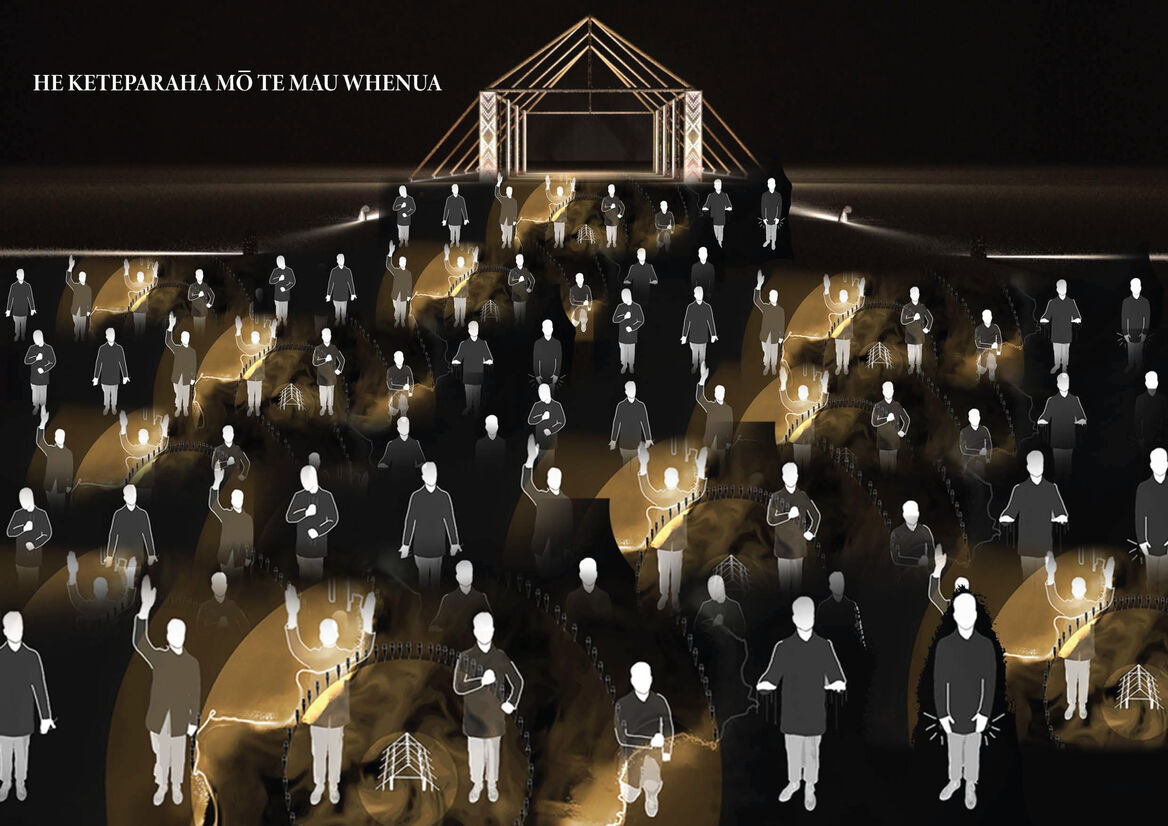
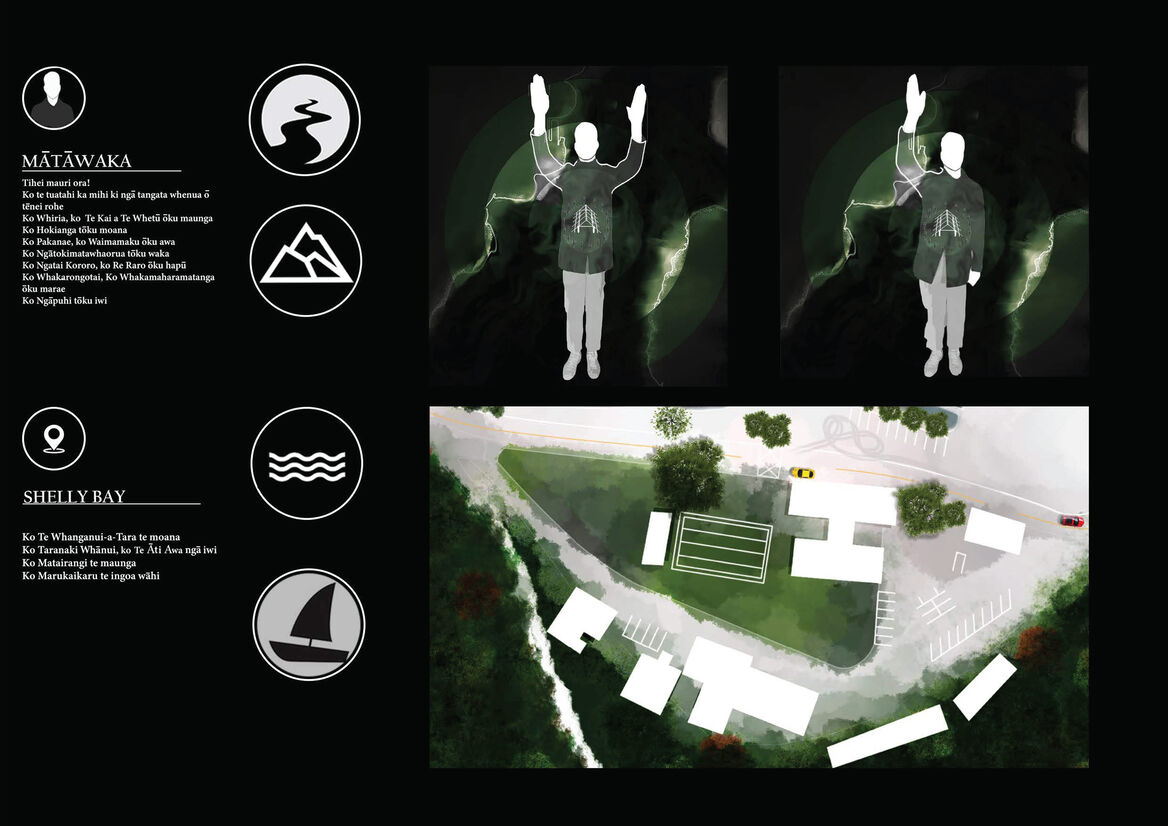
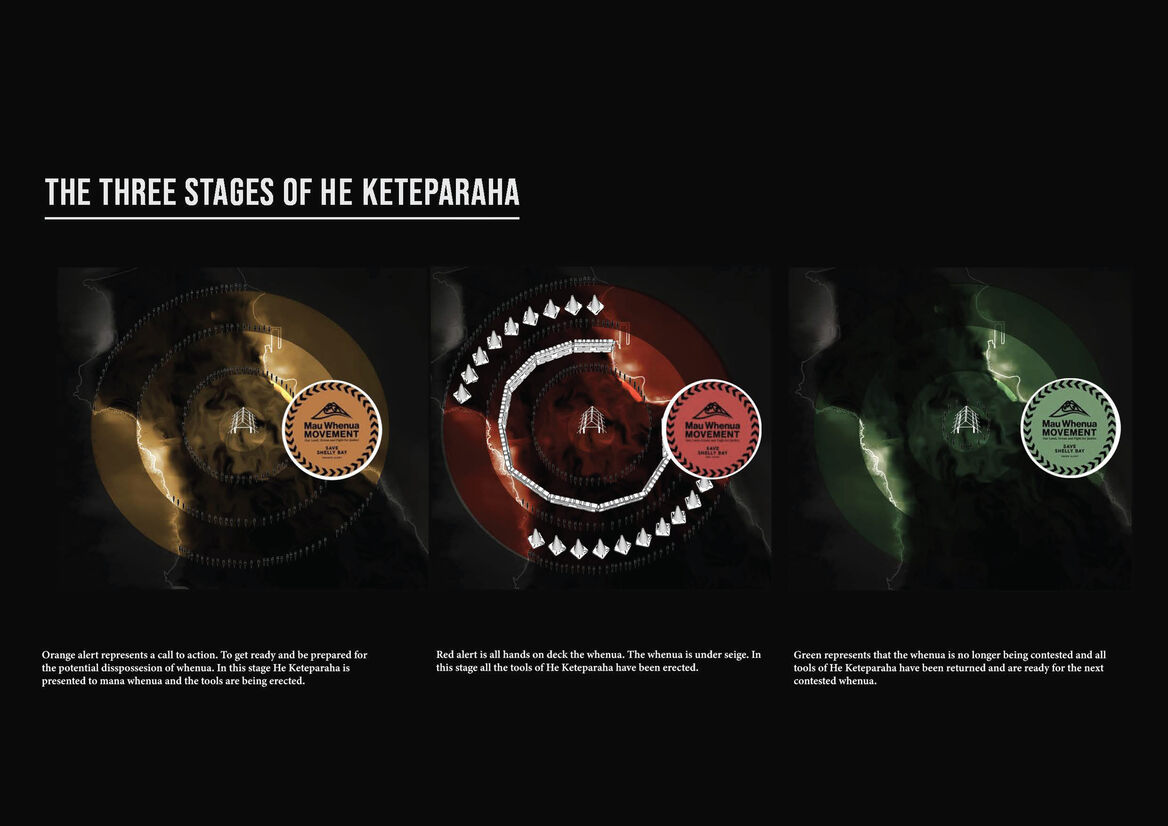
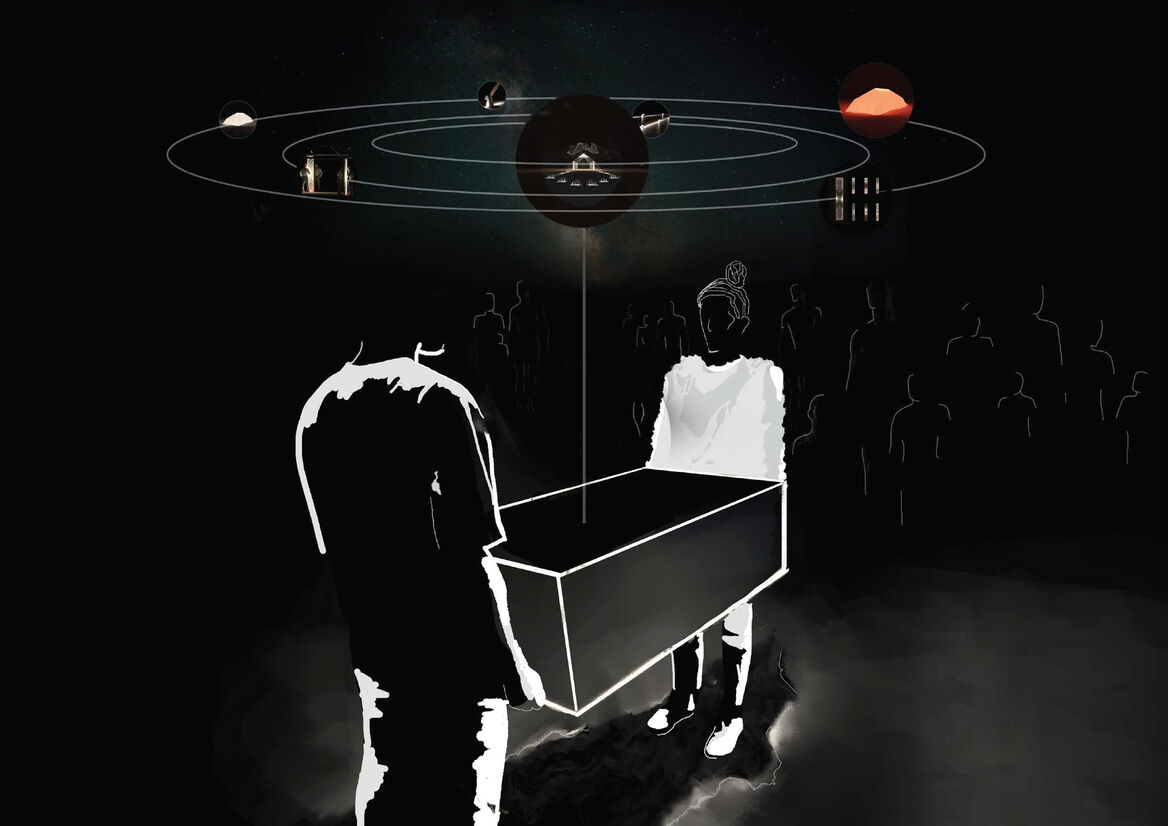
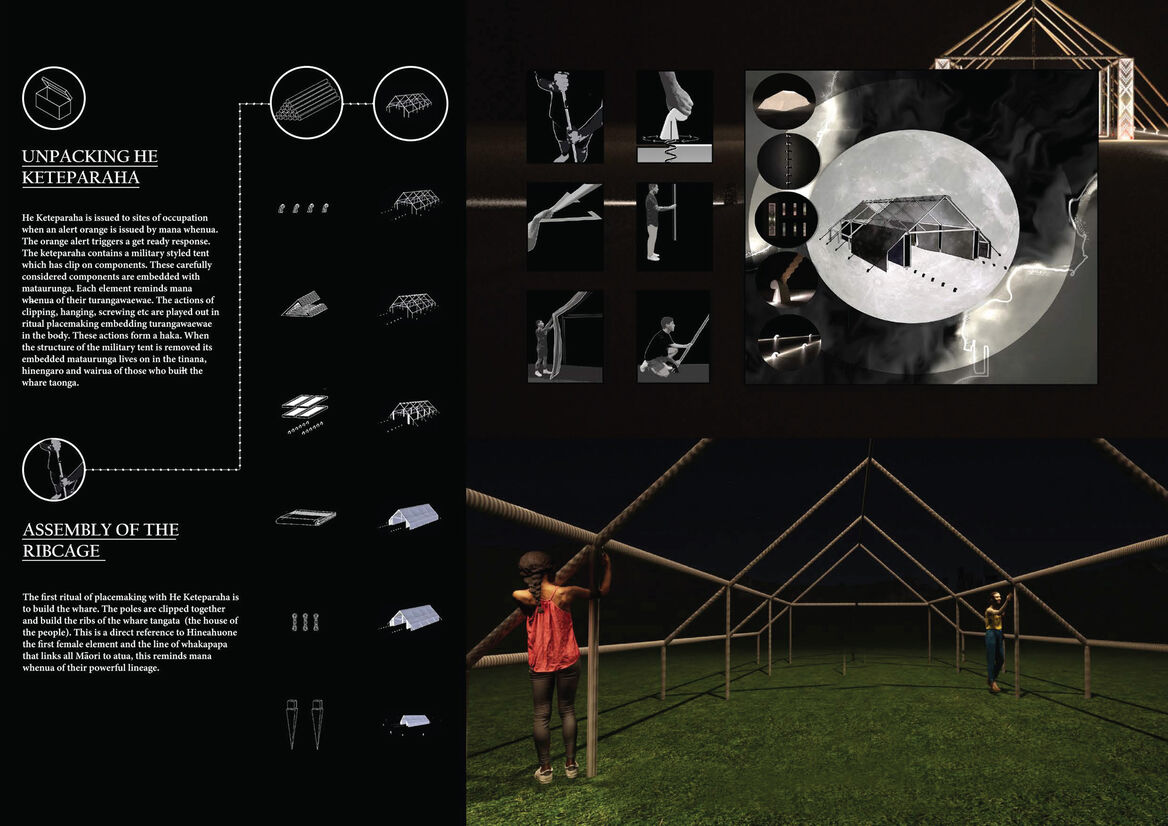
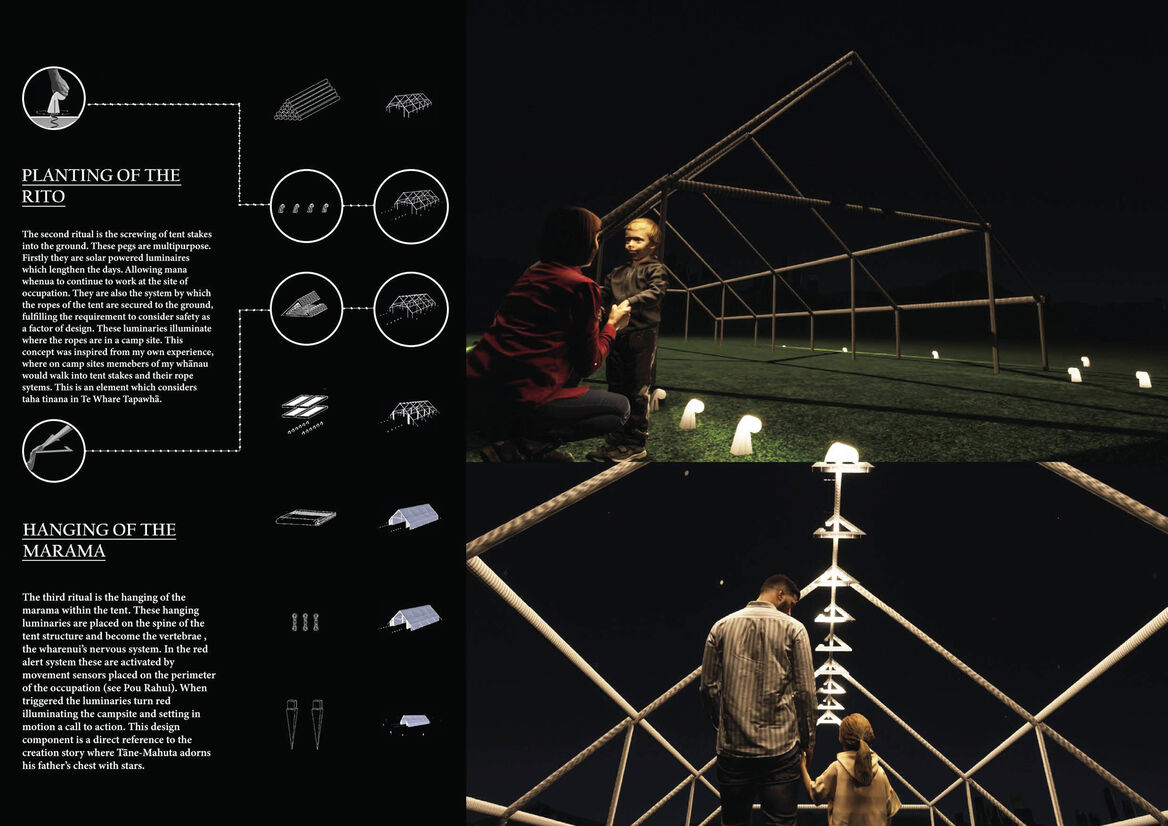
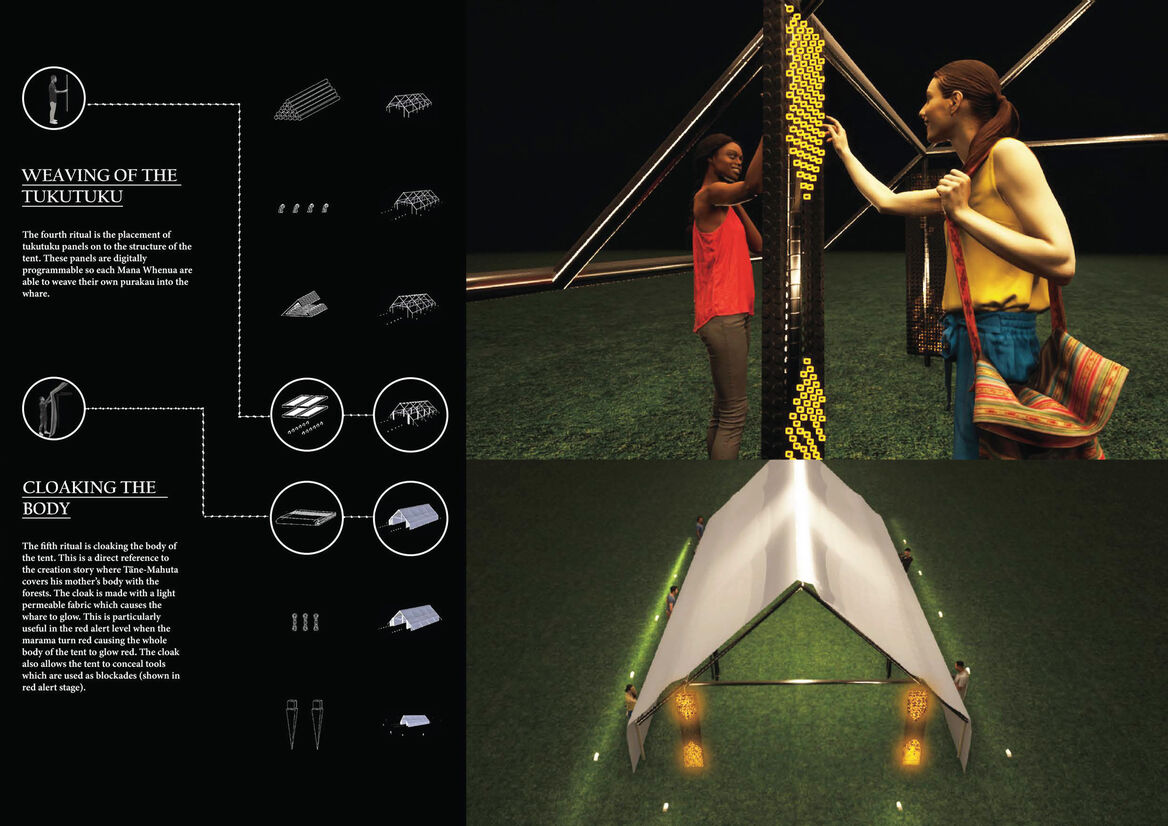
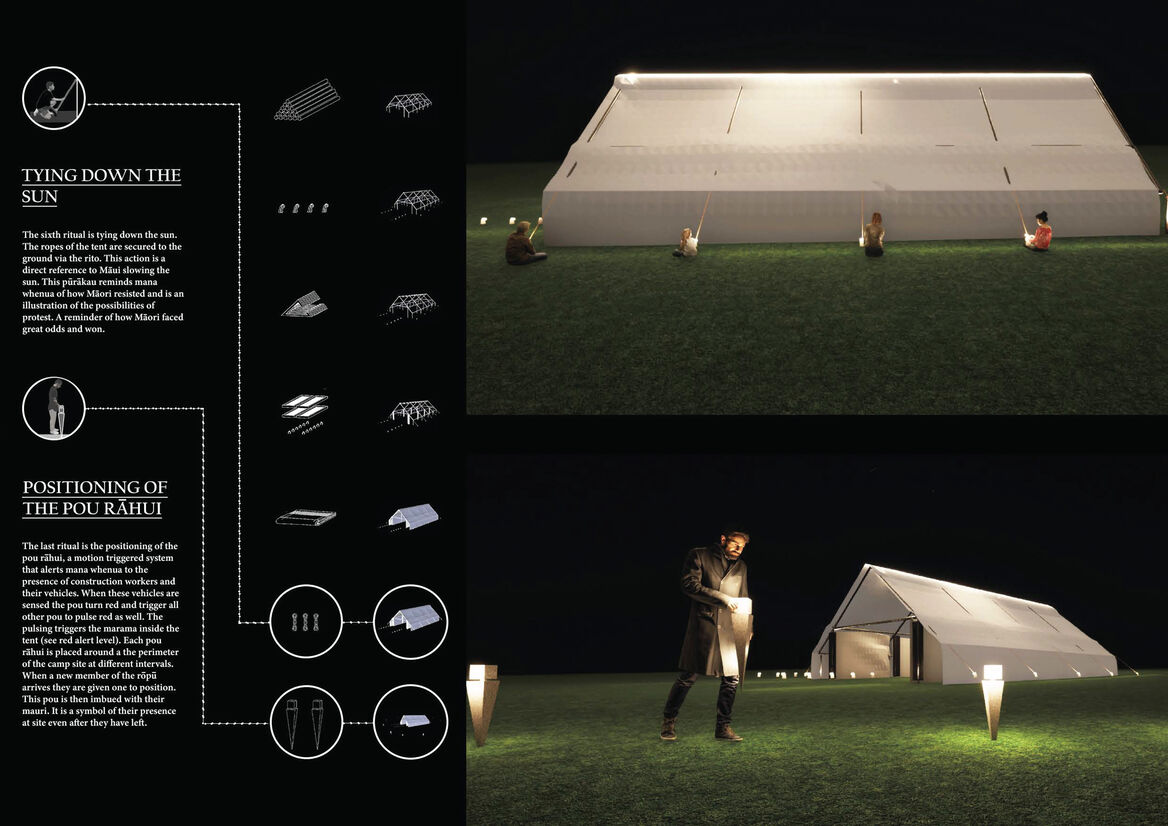
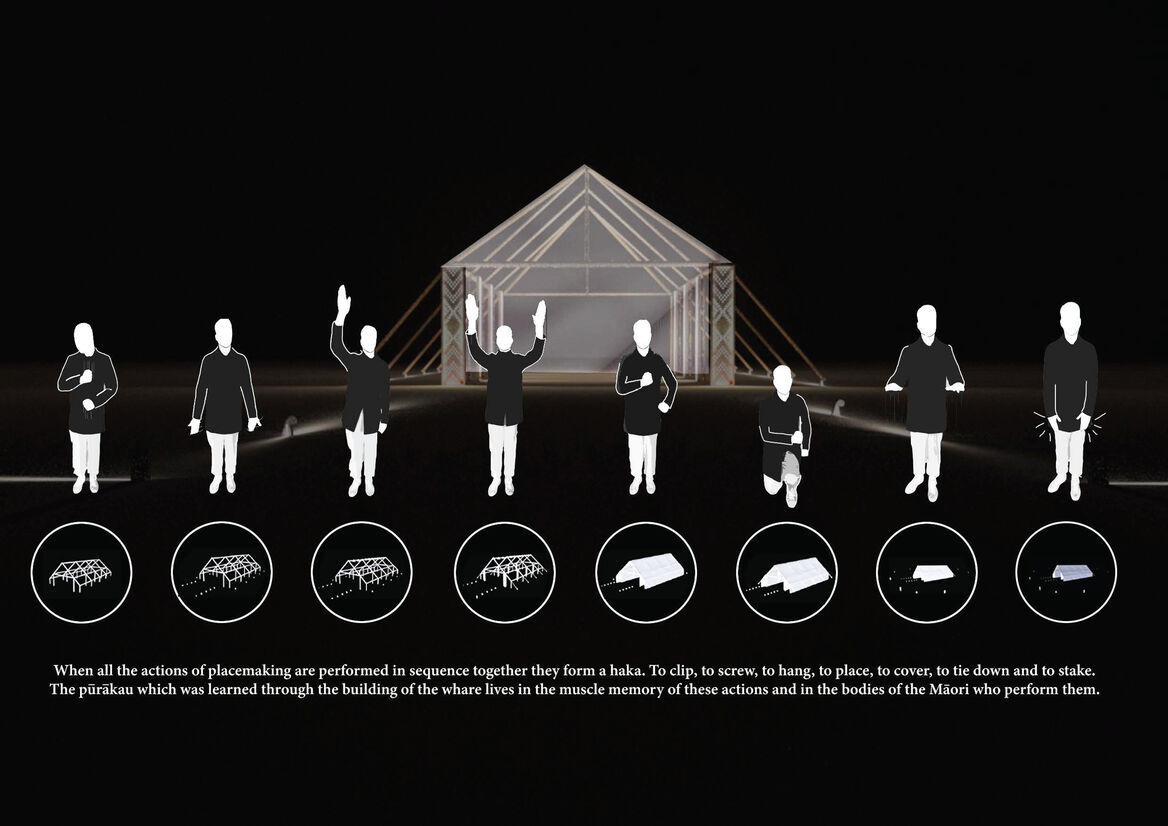
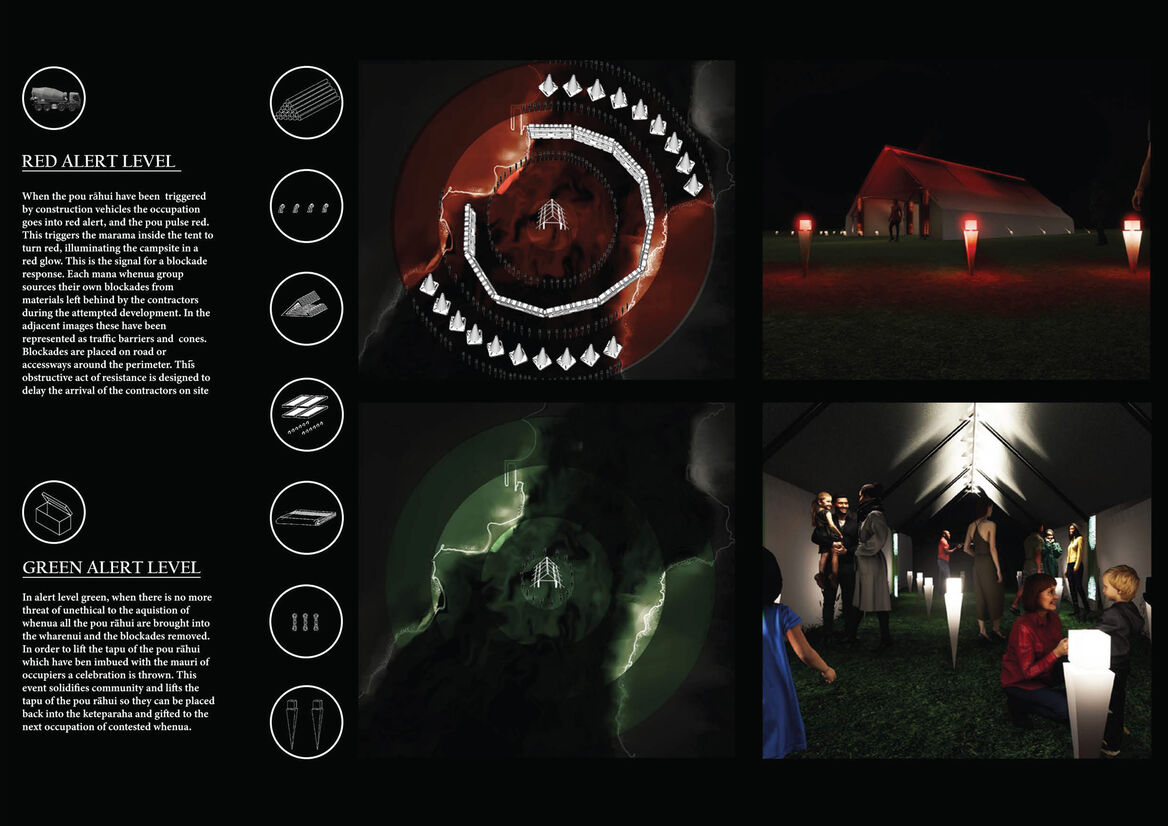
Description:
Ko te tuatahi ka mihi ki ngā tangata whenua o tēnei rohe
Ko Whiria, ko Te Kai a Te Whetū ōku maunga
Ko Hokianga tōku moana
Ko Pakanae, ko Waimamaku ōku awa
Ko Ngātokimatawhaorua tōku waka
Ko Ngāpuhi tōku iwi
Ko Ngatai Kororo, ko Re Raro ōku hapu
Ko Whakarongotai, ko Whakamaharatanga ōku marae
Tēnā koutou katoa
He Keteparaha Mō Te Mau Whenua is a koha to Māori contesting the continued colonisation of their whenua. Historically violent acts of land dispossession have served to fragment Māori communities and are linked to negative Māori statistics. This project serves to tautoko the power of mana
whenua to challenge this and to exercise tino rangatiratanga. Furthermore the projects strengthens tūrangawaewae through rituals of placemaking. He Keteparaha is a toolkit for safeguarding the wellbeing mana whenua as they protect their land. Each tool is design according to the holistic health elements of Mason Durie’s Te Whare Tapa Whā: tīnana (physical health), wairua (spiritual health), whānau (community health) and hinengaro (mental health). In this way, the design seeks to bolster hauora for Māori occupiers of contested whenua.
Specifically, this spatial intervention hijacks tent structures of the settler-colonial military institution and repurposes them within a mātauranga maori framework. The tools of He Keteparaha are designed as a set of attachments to the tent frame. Through the ritual installation of the attachments, the tent structures are transformed into whare taonga, reconnecting occupiers to Te Ao Māori and to their turangawaewae from which they draw mana and mauri. The tools of He Keteparaha also act to increase functions of shelter and safety, providing further care for the physical wellbeing of the inhabitants on sites that are often not otherwise provisioned for safety or habitation.
These tools for wellbeing are gifted to mana whenua, delivered in the form of a keteparaha, or toolbox, for the duration of the whenua occupation. As a toolkit or system, He Keteparaha is able to
respond directly to the conditions of the occupation site. Building off the traffic light alert system of Mau Whenua, the toolkit provides different types and levels of care at red, orange and green settings.
He Keteparaha is an act of tautoko that aims to strengthen the wellbeing and resilience of Māori while they resist the impacts of the imperialistic, colonial and capitalistic systems that attempt to rob Māori of their whenua, culture and identity. At the time of the project’s development, Shelly Bay in Te Whanganui-a-Tara was under threat and being occupied by Mau Whenua. While that situation has shifted, other sites around the motu remain under threat. To mana whenua contesting the dispossession of their whenua, kia kaha. I stand in solidarity with you.
Tihei mauri ora!